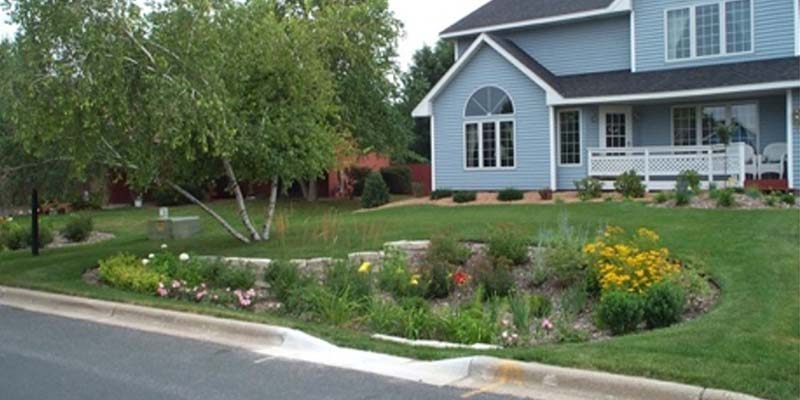
A rain garden is a bowl-shaped garden filled with plants to allow water to soak into the ground. They manage polluted runoff from impervious surfaces such as roofs, sidewalks and parking lots.
A rain garden:
- Filters water to remove sediment and pollutants
- Allows water to soak into the ground
- Reduces the volume of water going into the stormwater system
- Creates wildlife habitat, especially when native, pollinator plants are used
Perennial plants have deep roots that break up soil that has been compressed during the building process. This increases the soil’s ability to hold water and draw it down deeper into the ground. Turf grass has shallow roots that do not provide the same benefits. Perennial plants also improve soil health by breaking down pollutants and absorbing excess nutrients which are harmful to our lakes, wetlands and streams.
Rain gardens are relatively easy to install and require little maintenance once established. A well-designed and maintained rain garden also beautifies your property.
For more information:
- Learn about invasive plants from the Minnesota DNR
- View Blue Thumb’s rain garden page
